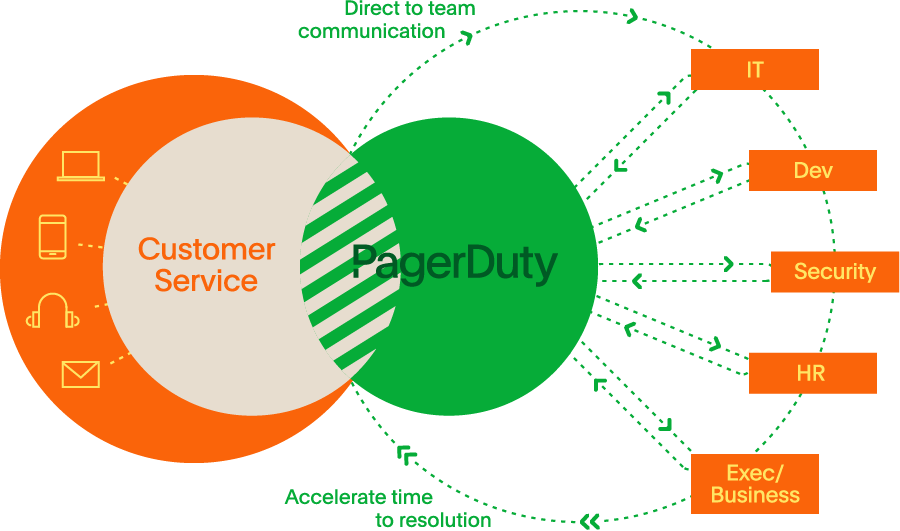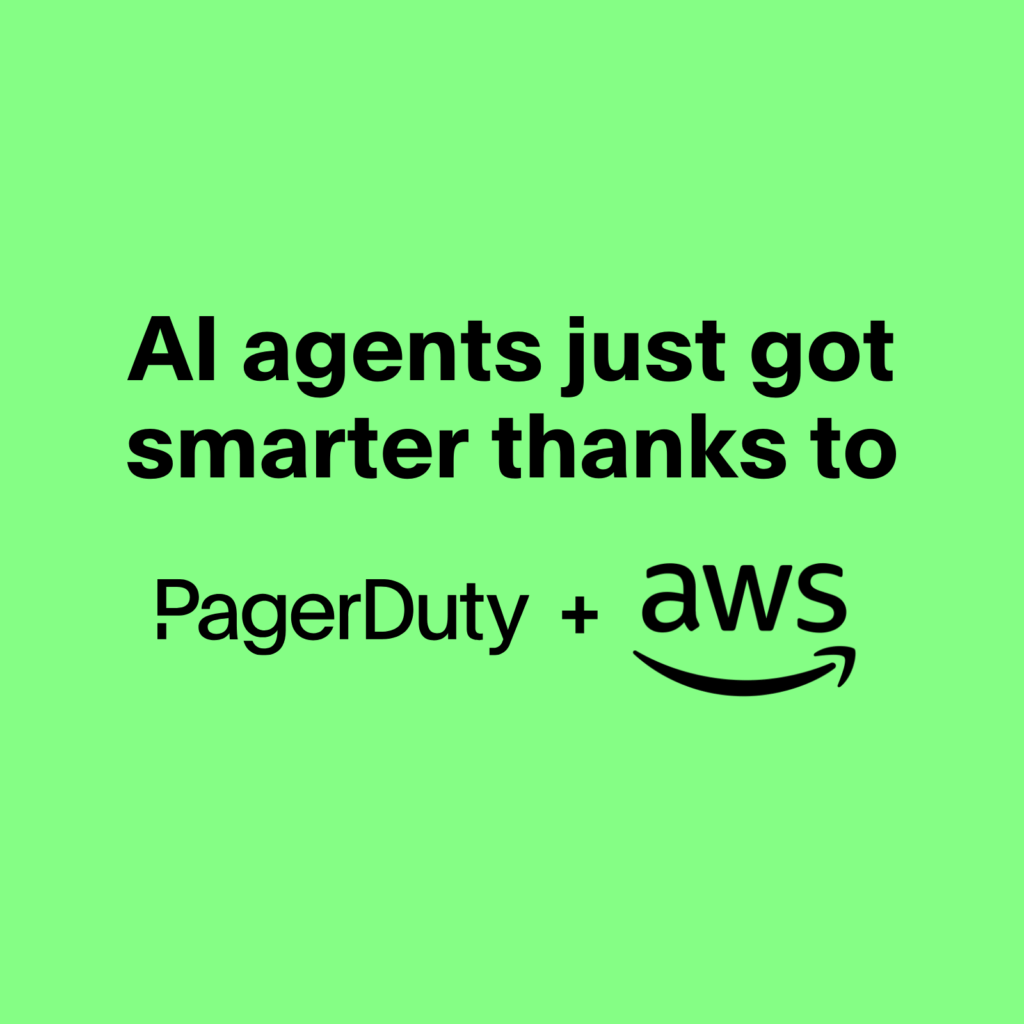- PagerDuty /
- Blog /
- Integrations /
- Put Your Customer Service Team in the Driver’s Seat With the New PagerDuty for Customer Service Plan
Blog
Put Your Customer Service Team in the Driver’s Seat With the New PagerDuty for Customer Service Plan
In 2020, your company is no longer digital-first, you’re very likely digital-only. To your customers, the digital experience is the only experience, and if it isn’t satisfactory they’re going to move on. That puts an increasing amount of pressure on customer service teams.
Before COVID-19 forced businesses globally to shut down, customer service teams were already on the front lines when it came to addressing digital customer issues—a pretty difficult job. Today, they need real-time status updates for business services and customer-facing applications. To effectively address customer issues, customer service teams need to understand how potential sources of digital issues impact customers so they can help identify and route them to the right teams to remediate. When software issues do happen, they need the ability to quickly escalate to the right teams in real time.
With this new normal driving customer service teams to do more with less and organizations prioritizing the move towards digital-first customer experiences, customer service requires a new approach. The critical role of “incident commander”—mobilizing who is responsible for orchestrating response so the right teams can respond and resolve in real time, historically fell on IT operations and DevOps teams as they responded to critical service outages. But in an all-digital world, that approach must now expand to include the critical Customer Service organization and the customer themselves.
This week at PagerDuty Summit, we launched the new PagerDuty for Customer Service Plan to help customer service teams be more proactive, reduce time spent on individual cases, and deliver improved, real-time customer experiences. This new plan includes special pricing and features aimed at getting customer service teams connected and in the driver’s seat—quickly.
Customer Service Needs a Holistic View
It’s not surprising that many service teams still operate in a reactive mode, which only gets worse when they’re dealing with high volumes of incoming customer service calls. When teams are working in this reactive mode, they often lack proper escalation processes and the direct line of communication needed to easily collaborate and communicate with other teams to resolve customer issues quickly and efficiently.
Additionally, many customer service teams lack a company-wide view of business service issues across disparate, complex systems and teams. Today, more than ever, remote and distributed service teams are isolated from the technical teams that can help resolve more complex issues. To address this disconnect, customer service teams need an integrated tool stack and a direct line of communication to other teams so they’re able to serve customers when it matters most—and with a high level of transparency and proactive communication.

PagerDuty for Customer Service
With PagerDuty, customer service teams can get in front of issues and proactively communicate incidents to customers before customers even realize something isn’t working correctly. By shifting to proactive mode, service teams can deliver better customer experiences that improve loyalty and satisfaction, which in turn helps improve team morale and job satisfaction since they now own and drive the process for issue resolution in an end-to-end manner. Developer teams, IT operations, and customer service teams are able to work together to ensure the best possible customer experience across your digital landscape.
By enabling two-way collaboration and communication with developers, operations, and executives stakeholders, customer service organizations can improve their efficiency and create a united front when managing issues that span across different teams across the organization. Most importantly, it puts the teams who talk to customers—and the customers themselves—in the driver’s seat when it comes to addressing customer needs.
With PagerDuty for Customer Service, teams are able to:
- Obtain a real-time view across business-critical services and the technology and people behind them
- Deliver bi-directional communication that enables collaboration between technical responders (like developers and IT operations) and customer service teams to proactively exchange information about customer-impacting issues
- Enable customer service teams to do more with less and deliver always-on service by connecting them with technical responders 24/7
- Empower customer service agents with full-case ownership as an “incident commander” to manage the response and coordinate across stakeholders for faster resolution, which helps manage increased caseloads and provide better service to VIP customers
New Zendesk Integration Drives Deeper Collaboration and Faster Resolution
Last but not least, our new Zendesk integration features fully bi-directional flows to help build a more united front for managing issue response and driving resolution by enabling an integrated approach among technology, data, and people.
This integration delivers “work where you are” functionality via the Sidebar and Status Dashboard so customer service agents don’t have to spend time on various disconnected applications and can focus on proactive coordination and communication. The integration also ensures that service, operations, and engineering are fully aligned on prioritizing white-glove customers and SLAs, as well as notes and status, to deliver a coordinated and fast response for customers.

Check out our new demo with Zendesk to see how customer service teams can work where they are and handle more issues:
The new normal means there’s a greater emphasis on providing best-in-class customer service, and making sure everyone is on the same page when it comes to the customer’s digital experience and satisfaction. It’s critical for customer service teams to have the ability to capture and acknowledge customer-impacting events as they happen and proactively push outbound communications before a customer notices or escalates. They’re in the driver’s seat when it comes to minimizing these issues and customer impacts, so they need to have full visibility via the dashboard to respond appropriately.
With PagerDuty’s new Customer Service Plan, your customer service organizations will have the context needed to orchestrate the right response in real time. Mobilizing the right teams and connecting customer service representatives with technical responders helps them quickly resolve issues and preserve the customer experience. As a result, customer service teams are empowered to resolve issues quickly and keep customers informed and happy.
Interested in learning more? Contact sales or sign up for a 14-day free trial to get started.


